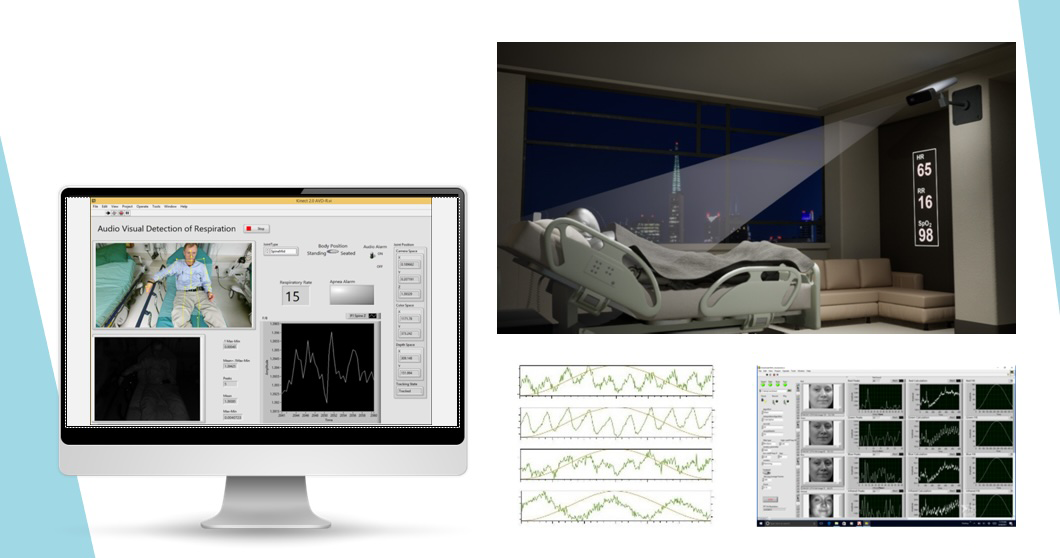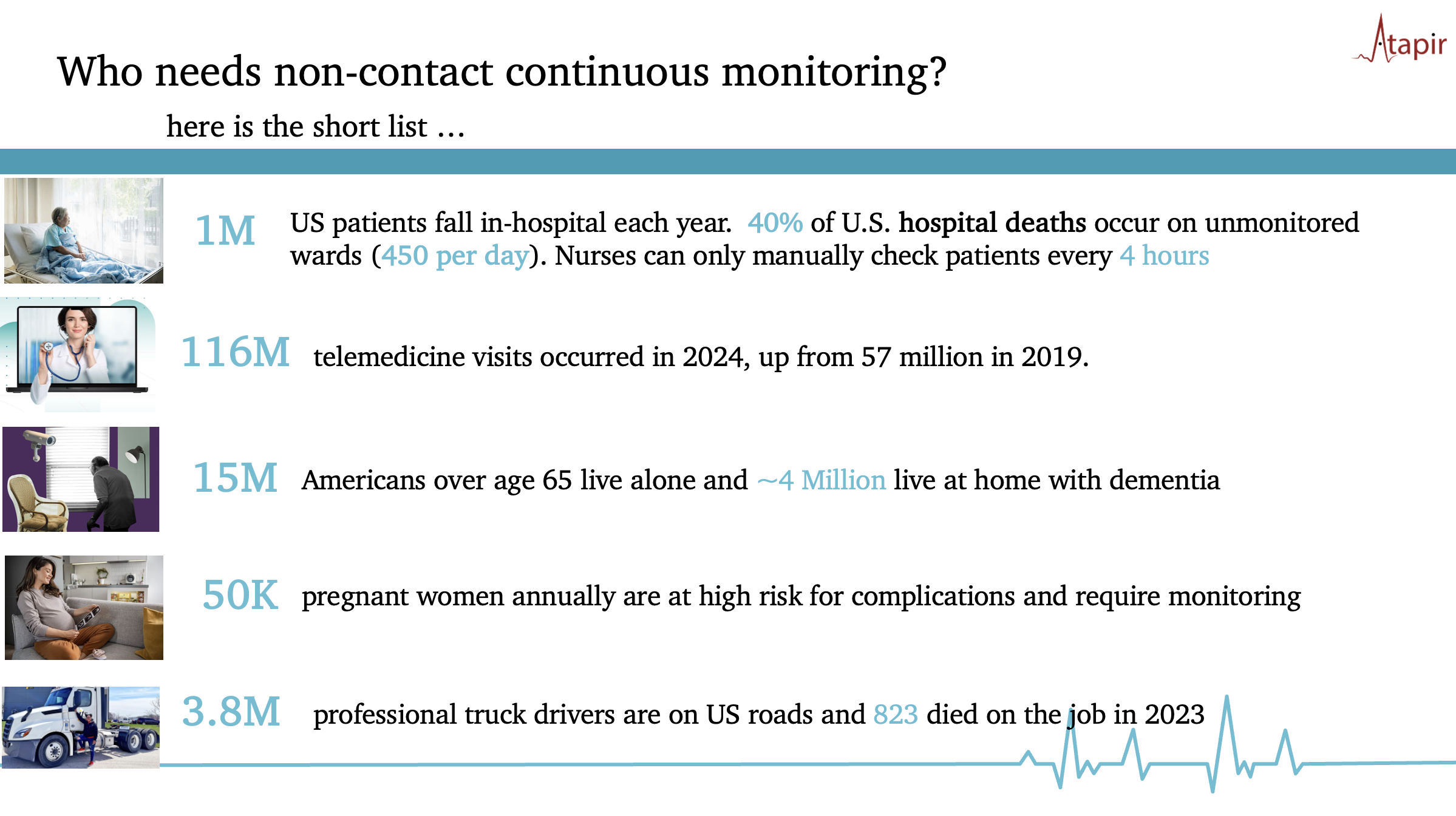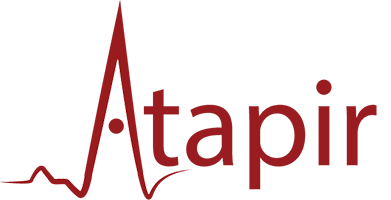Transforming Patient Care with AI-Powered Computer Vision
Software Defined, Non-Contact Patient Monitoring
No wires, tubes, cuffs or electrodes
Why ATAPIR?
Atapir is developing a non-contact, remote monitor to reduce the risk of respiratory and cardiac arrest in hospitalized and nursing home patients. This monitor measures heart rate, respiratory rate, pulse oximetry, perfusion, pain, mood, and other parameters remotely and scans for life.
AVD-M
Non-contact, continuous remote patient monitoring platform using machine vision and AI measures heart rate, respiratory rate, oxygen saturation, and perfusion remotely without any sensors on the patient.
The 4 Key Benefits
Atapir’s AVD-M will save lives at scale.
About Us
Atapir Medical has also developed a safe, effective, low-cost, low-risk, electronic sedative system that provides sedation for surgical and medical procedures.
Atapir, Inc. is a privately held company based in the San Francisco Bay Area. It is comprised of an experienced team of scientists and engineers, clinicians, and seasoned business professionals with a track record of bringing new medical devices to market.
The AVD-M Platform
Vigilance through AI
A $16B + Market Opportunity
Non-contact, continuous remote patient monitoring platform using machine vision and AI measures heart rate, respiratory rate, oxygen saturation, and perfusion remotely without any sensors on the patient.
As an integral element of the Digital Health Initiative, AVD-M seamlessly integrates with electronic health care records. This integration ensures continuous real-time monitoring of vital signs, facilitating risk mitigation and prompt identification of clinical deterioration, ultimately improving patient safety and outcomes. Given the presence of over one million unmonitored hospital beds in the U.S., this represents a significant opportunity for Atapir.

4 Key Benefits of the AVD-M Platform:
It saves lives.
By monitoring every hospital patient, it materially reduces the number of patients found dead in bed.
It reduces the hospital’s risk.
Each preventable death or injury incurs high costs to hospitals in litigation and the consequent impact on time, dollars, CMS penalties and reputation.
It assists with the nurse’s workload.
By monitoring every patient simultaneously, it assists in the nurses workload enabling them to provide the best care possible.
It saves money.
It radically reduces the cost of patient monitoring, allowing 100% of hospital patients to be monitored economically; currently 50% are not monitored.
This will save lives at scale.

